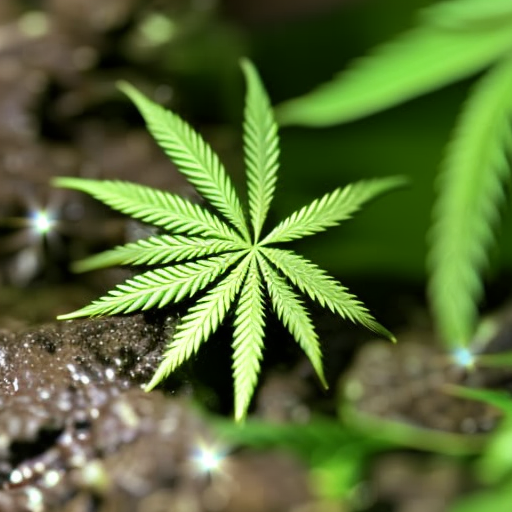
In recent years, the legalization and regulation of cannabis in many parts of the world have led to its cultivation on an industrial scale. However, this rapid growth in the cannabis industry has raised concerns about its environmental impact. Large companies dominating the sector often prioritize their profits over environmental responsibility. It is crucial to examine the environmental cost of industrial cannabis cultivation and explore ways to mitigate it.
To understand the environmental impact of cannabis cultivation, we must first delve into the role of soil in this process. According to the Soil Association, soil is a complex mixture of minerals, organic matter, air, water, and living organisms. These constituents provide essential components and services that sustain life. Living soil plays a vital role in providing cannabis crops with the necessary elements to produce cannabinoids, terpenoids, flavonoids, and other water-soluble components such as phospholipids, sugars, and waxes.
The balance of soil microbiome and food web serves as the foundation for healthy soil. However, due to years of topsoil extraction around the world, it is crucial to infuse soil with fungal and bacterial organisms to support the growth of all crops, including cannabis. The F:B ratio (the ratio of fungal biomass to total bacterial biomass) is a key indicator that determines optimal cultivation conditions for specific crop types. For instance, Cannabis Indica Lam. maximizes Δ9-THC production at a F:B ratio of 0.9 – 1.0, while Cannabis Sativa L. (hemp) maximizes CBD production at a F:B ratio closer to 1.2.
Biodiversity also plays a significant role in establishing the appropriate soil microbiome ratio. As soil biodiversity increases, it directly correlates with increased above-ground plant production. Every organism within the soil system has a specific function in the overall soil food web. Some organisms specialize in breaking down others to generate nutrients for the plant, while others eliminate toxins in the soil environment. These microbial communities are crucial for plant health, as they enhance resistance to stressors such as drought, pollution, and disease. The bioactivity occurring underground drives plant growth and increases carbon bioavailability to the crop. Optimal soil ecosystem regeneration and maximum crop production can be achieved through this natural method of bringing soil to life, rather than relying on synthetic approaches.
As a global community, we have continuously depleted the Earth’s soil through decarbonization, chemical pollution, and erosion. To counteract these detrimental influences on the agro-ecosystem, a new system must be established: regenerative agriculture. Regenerative agriculture, according to the Rodale Institute, is a farming method that improves the resources it utilizes instead of depleting or destroying them. This approach involves implementing techniques like no- or low-till farming, planting cover crops, mixed crop rotation, animal grazing, and the use of compost or manure.
Implementing these standards will help keep more carbon sequestered in the soil where it belongs. Cultivating cannabis either outdoors or in greenhouses has been common practice in the consumer market. However, how can we incorporate living soil and regenerative cultivation practices into innovations that sustain the industry’s future generation of cultivators? Carbon sequestration, company trading projects, and strategies for achieving net-zero emissions are all topics gaining attention within the cannabis industry.
In January 2020, Colorado launched the Colorado Cultivators Energy Management pilot program to address issues arising from large cannabis producers overloading the grid and causing utility shutdowns. The program assessed critical load areas such as lighting, heating, ventilation, air conditioning (HVAC), and control systems for replacement. When it comes to outdoor cultivation, research suggests that hemp is an effective bioaccumulator that is four times more efficient than mature forests. Hemp is also classified as a hyperaccumulator, meaning it can pull in toxins from the atmosphere and store them within the medium it is grown in. Comparatively, other bioaccumulators like alfalfa, peas, and red algae do not perform at the same rate as hemp.
Hemp’s ability to sequester more than 15 tons of CO2 while nitrogen-fixing the soil makes it an excellent candidate for reversing the negative impacts caused by traditional farming methods. The future of cannabis cultivation holds the potential to decrease its own carbon footprint and pave the way for a more sustainable future. As Mahatma Gandhi stated, “Sustainability is meeting the needs of the present generation without compromising the ability of future generations to meet their needs.”
In conclusion, industrial cannabis cultivation has significant environmental implications that must be addressed. Adopting regenerative agriculture practices can help mitigate these challenges by improving soil health, increasing biodiversity, and reducing carbon emissions. Government sectors should consider providing funding pathways to support environmental regeneration efforts. By prioritizing sustainability and implementing innovative solutions, we can ensure a more environmentally responsible future for the cannabis industry.

